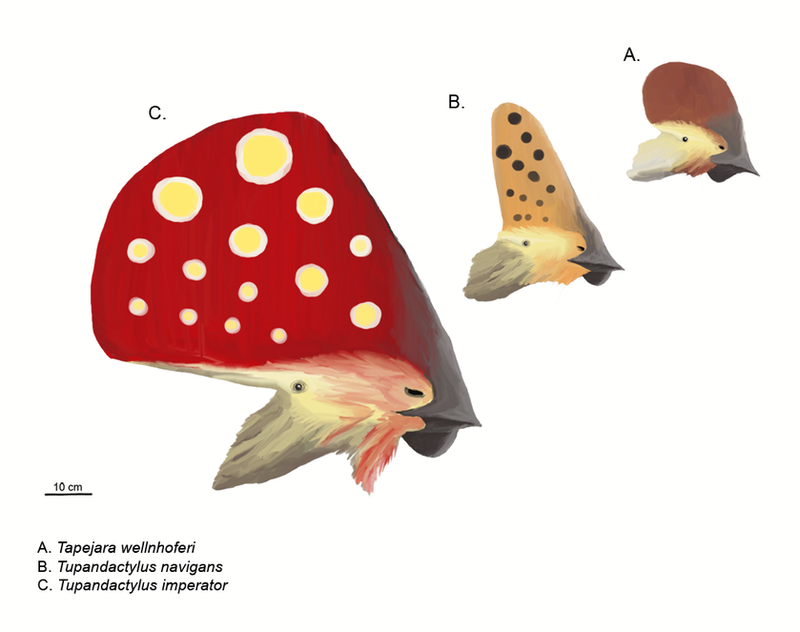HOME | DD
 MattMart — Tupandactylus and Friends
by
MattMart — Tupandactylus and Friends
by

Published: 2011-01-30 10:57:06 +0000 UTC; Views: 3599; Favourites: 70; Downloads: 0
Redirect to original
Description
Inspired by reading the manuscript for a paper on a new specimen of Tupandactylus, here's a comparison of the three species traditionally assigned to Tapejara but not split up into two or three different genera. Note that Naish and Witton 2006 found T. navigans basal to all other tapejarines (or tapejarids, if you prefer a topology where the thalassodromines are closer to azhdarchids) and therefore still deserves its own genus name. Some variation on Ingridia would be nice...The extent of the beaks and pycnofibres based on the new specimen described in:
Pinheiro, F.L., Fortier, D.C., Schultz, C.L., De Andrade, J.A.F.G. and Bantim, R.A.M. (in press). "New information on Tupandactylus imperator, with comments on the relationships of Tapejaridae (Pterosauria)." Acta Palaeontologica Polonica, in press, available online 03 Jan 2011.
Also, a yet-undescribed specimen may preserve a Pterorhynchus style "beard", which I restored on T. imperator. The specimen described by Pinheiro et al. does have pycnofibres up to the mandibular keel, so it's not so far out for the beard to be real and not, say, a bit of plant material.
Related content
Comments: 15

Wonderful job! I was thinkin', since T. navigans and T. imperator live in the same formation at the same time and since T. navigans seems to me like a juvenile animal, it's plausible to think that these two pterosaurs are the same animal?
Or I'm simply mad?
👍: 0 ⏩: 1

It's certainly plausible, but will require more specimens to tell. We know that in other pterosaurs, the crests go through drastic changes as the animals age (not to mention the sexual dimorphism factor). I also would not be surprised if Tupuxuara leonardi and Thalassodromeus sethi turn out to be the same species.
👍: 0 ⏩: 1

Yeah that's absolutely possible. Well, thanks a lot for the answer and the clarification
👍: 0 ⏩: 0

Very cool, although I like the small original Tapejara best with its fluffy head and beady eyes.
Pterorhynchus beards might have been more widely distributed among pterosaurs? Your posts are a treasure trove of paleoartistically crucial yet rarely mentioned soft tissue stuff.
👍: 0 ⏩: 1

Thanks! I tried to make the Tapejara Classic a bit cuter, as it's known only from a subadult specimen.
👍: 0 ⏩: 0

Nice! The imperator design invites a whole new meaning for the idea of a flying mushroom
👍: 0 ⏩: 1

You know, I didn't consider that while I was drawing it, but now I can't help imagining one careening off a cliff in a go-kart while screaming pitifully.
👍: 0 ⏩: 0

Why couldn't they just leave them all as Tapejara? Seriously.
👍: 0 ⏩: 2

Well, the problem is that they may not all be that closely related to each other (or at least, some might be closer to other species that have already been named). So the choice would be to give each a new name, or to simply sink all of Tapejaridae into the single genus Tapejara.
This post has a good overview, though some more recent studies disagree with Naish's results, placing thalassodromines and even choyangopterines as closer to Taps than to true azhdarchids.
[link]
👍: 0 ⏩: 0

The splitters! Why do they rape my childhood?!?!
👍: 0 ⏩: 2

Killer comment there, Tim!
👍: 0 ⏩: 1





























